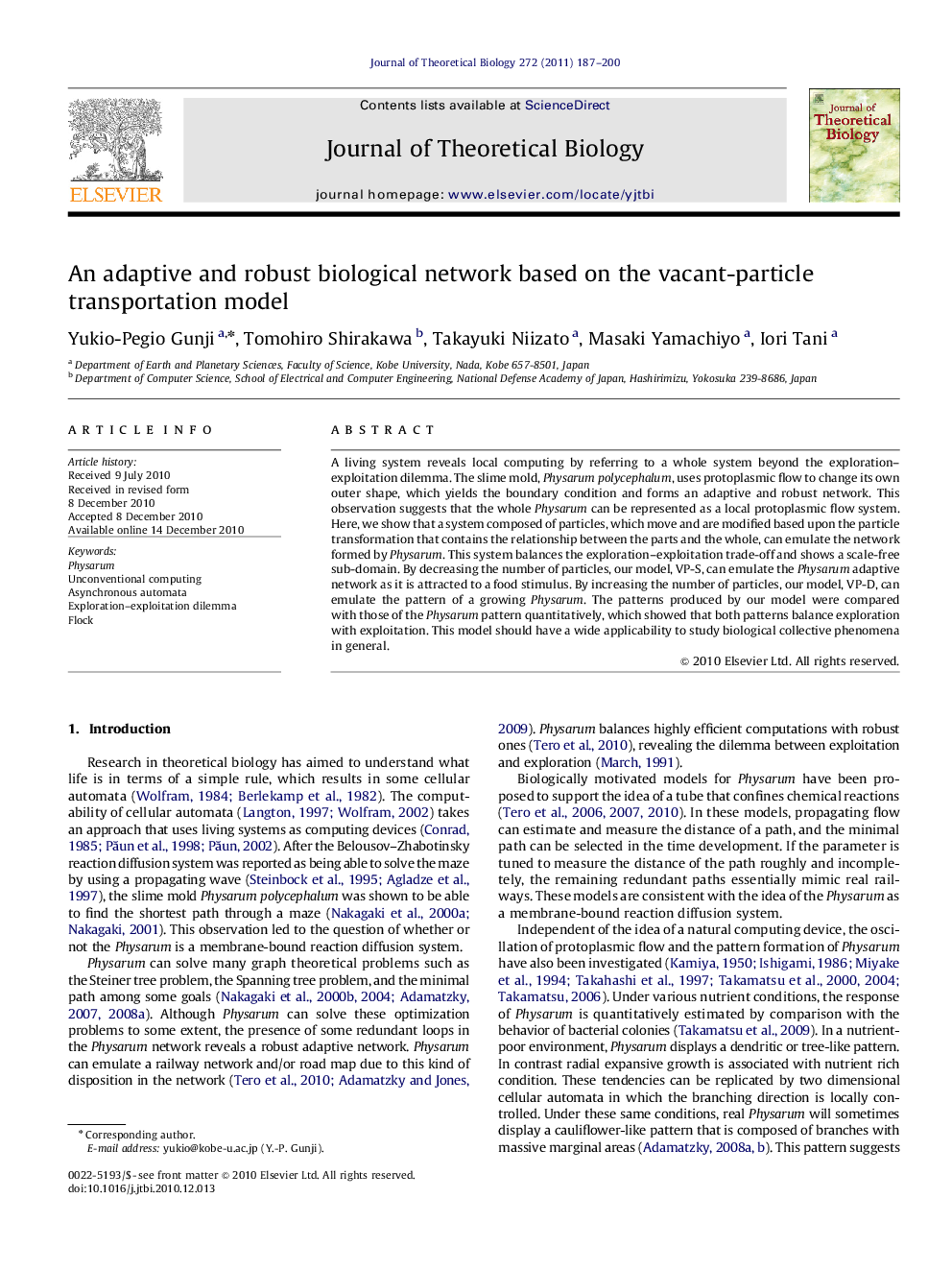| Article ID | Journal | Published Year | Pages | File Type |
|---|---|---|---|---|
| 4497217 | Journal of Theoretical Biology | 2011 | 14 Pages |
A living system reveals local computing by referring to a whole system beyond the exploration–exploitation dilemma. The slime mold, Physarum polycephalum, uses protoplasmic flow to change its own outer shape, which yields the boundary condition and forms an adaptive and robust network. This observation suggests that the whole Physarum can be represented as a local protoplasmic flow system. Here, we show that a system composed of particles, which move and are modified based upon the particle transformation that contains the relationship between the parts and the whole, can emulate the network formed by Physarum. This system balances the exploration–exploitation trade-off and shows a scale-free sub-domain. By decreasing the number of particles, our model, VP-S, can emulate the Physarum adaptive network as it is attracted to a food stimulus. By increasing the number of particles, our model, VP-D, can emulate the pattern of a growing Physarum. The patterns produced by our model were compared with those of the Physarum pattern quantitatively, which showed that both patterns balance exploration with exploitation. This model should have a wide applicability to study biological collective phenomena in general.
